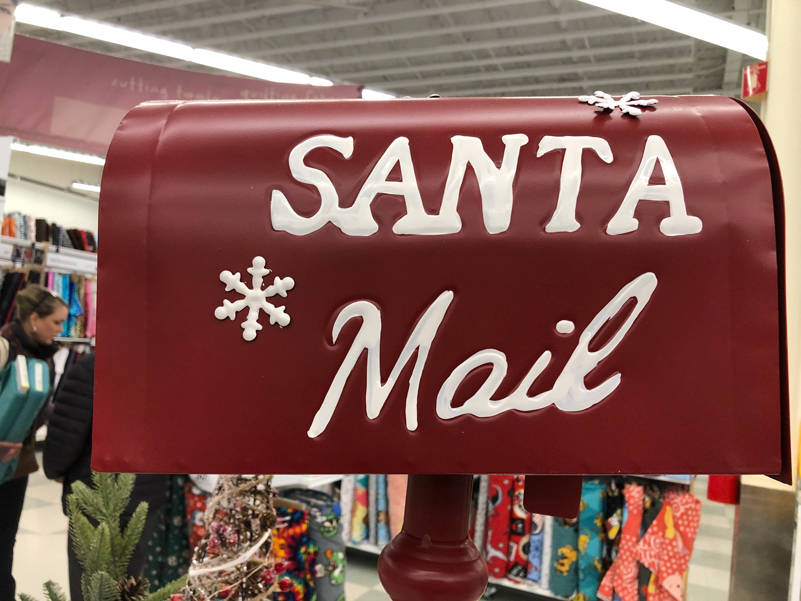By Morf Morford
Tacoma Daily Index
Remember a few months ago when the only traffic in neighborhoods was delivery vans? Fast forward to now, and what has changed?
Not much – except the pace.
To no one’s surprise, COVID has not retreated, it has in fact expanded dramatically, factor in the holidays and you have the making of a delivery dilemma like none of us could have imagined in our wildest post-apocalyptic, dystopian fantasy.
Yes, it is the arrival of 2020’s final assault on “normal.”
If you thought murder hornets, unrest in our streets, and an imploding economy was all 2020 could throw at us, think again; welcome to Shipageddon (https://www.nytimes.com/2020/10/16/technology/holiday-shipageddon.html?).
You might have thought, based on media portrayals, that it was our urban centers (sometimes literally) ablaze, but in November and December (and probably January) it was our neighborhoods packed, not with protestors, but with delivery vans.
Back before the holiday season, I would see three or four vans (usually at least one each from Fed Ex, UPS, Amazon and USPS) every day out my window.
Combine unprecedented online shopping with a holiday season and you have a shipping/delivery problem no one could have foreseen.
The rush of shipping and neighborhood delivery began in March, and basically never stopped. Or even slowed.
To paraphrase a term from the 1990s, we have a delivery system on crack.
And it’s not just local.
As The New York Times puts it “our delivery system is breaking” –https://www.nytimes.com/2020/12/09/technology/holiday-shopping-deliveries.html.
Along with our health care system, our economy, our public schools and the mental health of virtually every one of us, our home delivery system is undergoing a “stress test” as never before.
And the reality is, how could it not?
Home and office delivery is one of the few areas of the economy flourishing right now. Amazon, UPS and the USPS, among others, are on hiring frenzies.
Full-time, part-time or floating schedules are open for negotiation.
Record low fuel prices and increased employment are the positive features, the negatives are increased costs, delays and more lost packages.
UPS, for example, imposed a daily limit on the number of holiday season orders it will pick up – even from major retailers.
Retailers (even big ones like Macy’s) are experiencing more and more delays and higher costs.
Those costs will inevitably filter down to every one of us.
Unlike previous holiday seasons, don’t expect to get cut-rate prices on Black Friday or the week before Christmas, because stores won’t discount merchandise that’s already in short supply – and what isn’t in short supply this year?
If there is a particular gift that you have your eye on, it might not be there if you wait.
The system is under stress, but who of us could even imagine what happened when we clicked those boxes?
Maybe we will begin to appreciate the work of grocery clerks, health care workers, bus drivers, restaurant staffers and other often overlooked but now recognized “essential workers.”
Many of us are beginning to realize the complexities of our shopping lives.
Those mouse clicks on Amazon or Ebay or Walmart or Target have always set in motion a manic and frenzied ballet of warehouse workers, truck drivers, parcel delivery couriers and more, but who of us knew anything about it?
As we hit “send” we might think that the work is done, but no, like Santa’s elves, a virtual army of sorters, packers and shippers are energized to get those packages to our doors.
There’s an old saying from the ‘70s – “There’s no such thing as free lunch.” A 2020s update might be “There’s no such thing as free delivery.”
Trucks, vans, delivery services and “porch pirates” are the new reality. Who of us even knew any of them existed, at least on the ubiquitous scale we see them, even one year ago?
The shipping delays and increasing nuisance factors this year might reveal the strains at the seams, but they’ve always been there.
Who of us, before 2020, thought about our place in the supply chain or delivery cycle of everything from toilet paper to Christmas trees?
But, if we learned anything from 2020, it is that we better be flexible.
If you need an item by a certain date, don’t count on delivery. You can usually pick-up online orders – and you’ll often get a discount.
It’s probably too late to order to get anything delivered in time for the holidays, so in true 2020 fashion, we need to improvise.
This “no contact” approach to shopping for everything from groceries to holiday gifts is shifting our economy in ways that will be felt for years.
For some of us, it is our new “habit.” Our shopping routine is, for better or worse, predominantly online. Have we learned to like it or will we be glad to leave it behind?
I miss “hands-on” in person shopping, but I also know that it will take me a long time to get back into the nonchalant way I used to randomly stop and check out an interesting looking store.
Last-minute shopping might be one of the many casualties of 2020. From now on we will probably have the attitude of “if we want it, we better buy it now.”
We can expect many holiday deliveries to extend into January.
For those who celebrate Christmas, we might see a return to how Christmas was celebrated for centuries. Remember the song “The Twelve Days of Christmas”?
This song refers to an actual 12-day period from December 25 to January 6. Oddly enough, this might be a more realistic “window” for holiday delivery.
COVID and 2020 have upended many of our assumptions and traditions, but just might end up returning us to, or at least opening our eyes to, traditions most of us have long forgotten.
For better or worse, neighborhoods and city streets are packed with delivery vans. Is this just another way that the future suddenly arrived in 2020?





